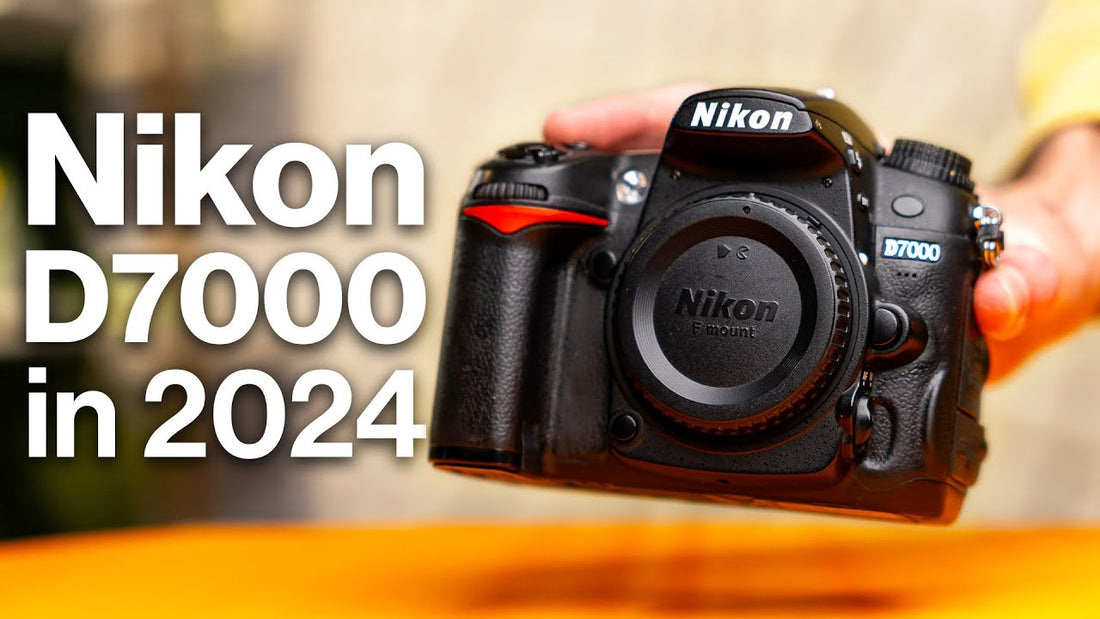
Revisiting The Nikon D7000 | The Best Photography Camera Under $200?
Check out my full video HERE
This post contains affiliate links. If you click and make a purchase, I may earn a commission at no extra cost to you. Thanks for your support!
Introduction
If you’re just getting into photography or want a capable backup body without spending a fortune, the Nikon D7000 might surprise you. Launched in 2010, this mid-range DSLR has aged gracefully. Even in 2024, it packs robust features that many budget shooters will appreciate—especially when you can snag one for about $200 used.
In this post, we’ll break down what makes the D7000 a standout at this rock-bottom price, and why it might just be the best photography-focused camera you can get for under $200.
Key Specs & Features
- Sensor: APS-C (1.5x crop)
- Resolution: 16-megapixel RAW photos
- Video: 1080p at 24 fps (basic, but usable in a pinch)
- Build Quality: Magnesium alloy body, weather-sealed
- Speed: 6 fps burst rate
- Viewfinder: Bright optical viewfinder
- Extras: Dual SD card slots, top LCD info display
At first glance, the D7000 stands out with its robust build and pro-level touches, which are uncommon in a camera this cheap.
Why the D7000 Still Shines for Photography
-
Pro-Level Build & Weather Sealing:
Despite costing about $200 now, the D7000 was once a $1,200 mid-tier DSLR. Its magnesium alloy body and weather sealing give it a professional feel and durability not found in many budget options. -
Dual SD Card Slots:
Dual slots are rare at this price. You can back up your photos in-camera or extend your shooting without changing cards. Even today, dual slots are often reserved for higher-end models. -
Ergonomics & Controls:
The D7000 sports numerous buttons, dials, and a top LCD screen for quick access to settings. Customization options and a user-friendly menu system let you set it up the way you want—a far cry from the minimal controls of many entry-level models. -
Image Quality for Still Photography:
The 16MP APS-C sensor, while older, still delivers excellent RAW files. You get good detail, decent dynamic range, and solid low-light performance for the era. For general photography—portraits, landscapes, street photography—it’s more than enough. -
6 fps Burst Rate:
Shooting 6 frames per second was impressive at its launch and remains handy for action shots, sports, or fast-moving subjects. At $200, this kind of speed is a steal.
Where It Falls Short: Video & Modern Conveniences
-
Video Capabilities:
The D7000 tops out at 1080p/24fps with no advanced video features like 4K or slow-motion. The autofocus in video mode is lackluster, so manual focus is your best bet. -
Screen & Viewfinder Tech:
The 3-inch rear LCD is fixed and low-resolution. There’s no touchscreen or tilting mechanism. While the optical viewfinder is bright, you won’t find any advanced hybrid viewfinder features here. -
Age & Firmware:
Being a decade old means it lacks modern perks like Wi-Fi, Bluetooth, or USB-C charging. But at this price, that’s expected.
Who Should Consider the D7000?
-
Photography Enthusiasts on a Budget:
If you care mostly about stills, the D7000’s robust build, solid sensor, and dual card slots are a godsend for under $200. -
Learners & Hobbyists:
Perfect as a first DSLR body, you’ll learn manual controls on a camera that feels professional, without the financial stress of a pricey investment. -
Backup/Second Body for Pros:
If you’re a working photographer needing a cheap backup camera, the D7000’s reliability and compatibility with a wide range of Nikon F-mount lenses make it a solid option.
Who Should Skip It:
-
Video-Centric Creators:
Without modern 4K, good video autofocus, or advanced codecs, it’s not ideal for video-first shooters. -
Tech Lovers Wanting the Latest Features:
No in-camera charging, no advanced autofocus tracking, and no modern connectivity. If these matter to you, look elsewhere.
Final Thoughts
In a world dominated by cutting-edge mirrorless options, the Nikon D7000 stands as a testament to how much value you can find in older DSLR models. For around $200 used, you get a well-built, feature-rich camera that excels at still photography. While it won’t satisfy modern videography demands or deliver today’s connectivity options, it’s a near-perfect budget photography tool.
